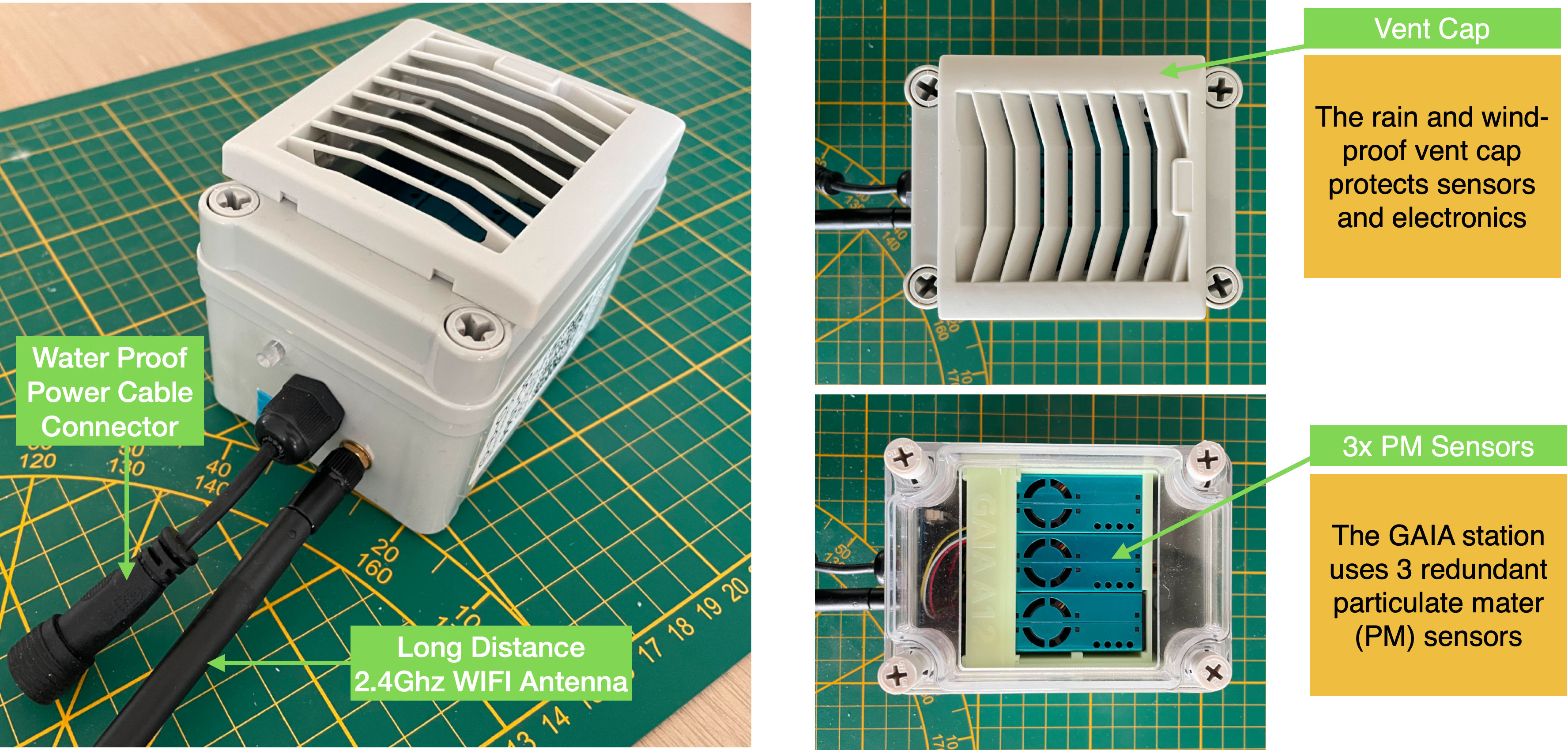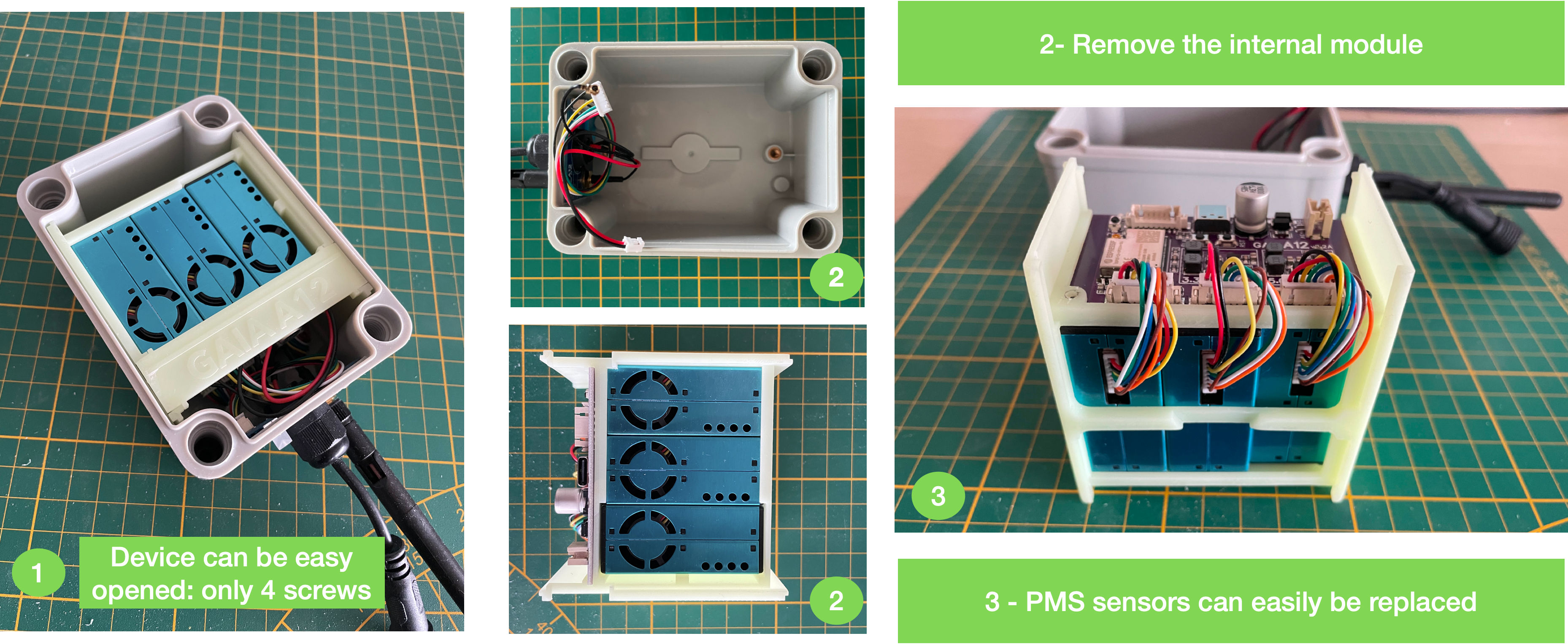ここでは、GAIA A12 モニタリング ステーションの設計内部の洞察をいくつか示します。
Gaia の外部機械エンクロージャは特別に設計されており、ベント キャップが付いており、センサーを直接の風や雨から保護します。エンクロージャは耐紫外線性の ABS プラスチックで作られています。

GAIA A12 external mechanical design
GAIA ステーションのメンテナンスは非常に簡単です。特に、内部センサーの交換は標準的なドライバーだけで誰でも行うことができます。

GAIA A12 internal design:
Gaia は 3 つの冗長ダスト センサーを使用します。3 つの冗長センサーを使用する理由は、1 つのセンサーが故障した場合に、どのセンサーが故障したかを知ることができるためです。
センサーが 2 つしかないステーションの場合、センサーが故障すると、どのセンサーが正しいデータを報告しているのか、間違ったデータを報告しているのかを知ることができません。
GAIA ステーションは、ダスト センサーに 25% のデューティ サイクルを使用します (6 分ごとに 90 秒間アクティブ)。これにより、GAIA ステーションはメンテナンスを必要とせずに数年間運用することが可能になります。
GAIA は、サンプル間隔 (1 分) ごとに、間隔の最小値、最大値、標準偏差、平均値、中央値を提供します。これらの情報はすべて、センサー データの品質に関する信頼できる情報を抽出するために必要です。
Gaia ステーションの価格は 200 ドルで、この価格で 2x5 メートルの防水電源ケーブルと電源が付属します。
GAIA A12 $200 USD に含まれるアイテム:

2: GAIAデバイス
1: 2x5メートル防水DC5.5電源ケーブル
3: 外部WiFiアンテナ
4: 5V/1A USB電源
5: USB <-> DC5.5電源ケーブル
6: 取り付け接着剤
7: 取り付けストリップ
1: 2x5メートル防水DC5.5電源ケーブル
3: 外部WiFiアンテナ
4: 5V/1A USB電源
5: USB <-> DC5.5電源ケーブル
6: 取り付け接着剤
7: 取り付けストリップ
ご注文・お問い合わせ
送料を含む見積もりを取得するには、以下のフォームに記入してください。
よくある質問:
- お支払い:通常のクレジットカードを使用して行うことができます。
- 割引: 5 個注文の場合は 10% 割引、10 個以上の場合は 20% 割引。
- DC アダプター: 製品には、米国、EU、AU、英国向けのローカライズされた電源プラグ アダプター (USB 電源) が付属して出荷されます。
--
GAIA 大気質モニタリングステーションのページに戻る
